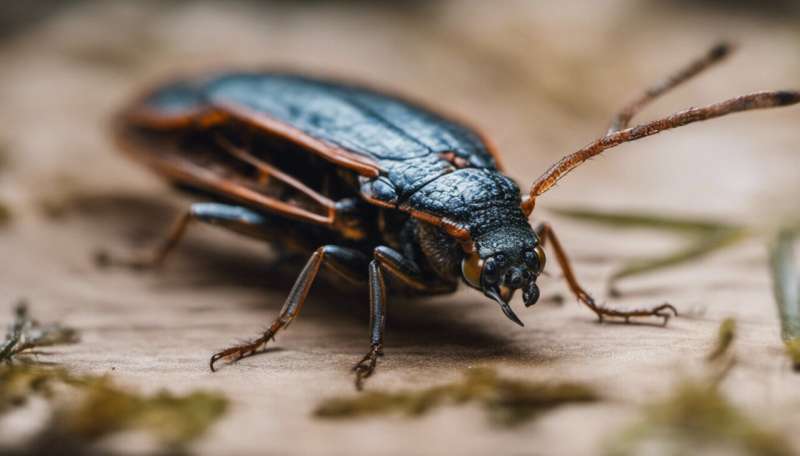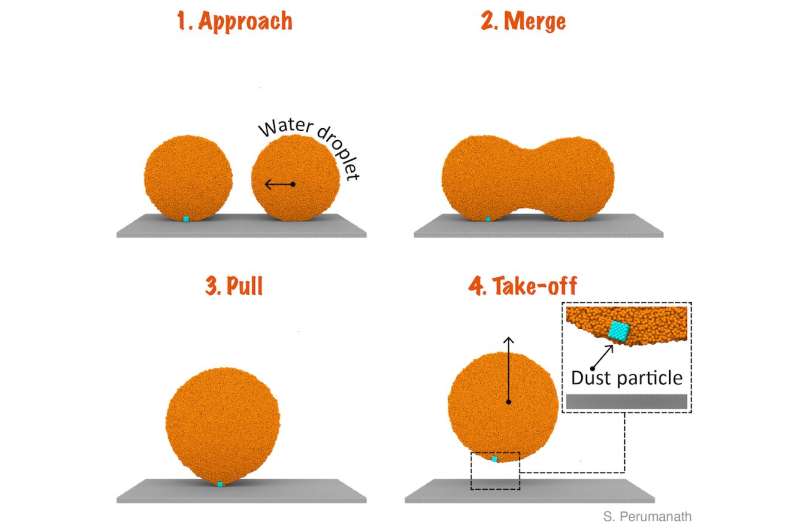
Nature is inspiring scientists all the time. Some ideas are still in research, like beaver-inspired super-warm wetsuits. But others are already part of human life, like Velcro (based on burdock burrs) and the Japanese bullet train (modeled on kingfishers’ long narrow beak).
Cicadas inspired my team’s recent research into self-cleaning surfaces.
Keeping your car windowpanes spotless can feel like a never-ending battle against the forces of dirt and dust. But insects like cicadas have a fascinating trick up their sleeves that keeps their wings spotless, without the insect putting in any effort. And it may hold the key to save us the hassle of constant cleaning.
My team’s study investigated the mechanism behind this self-cleaning process.
Thanks to the peculiar texture of cicada wings, morning dew condenses on them and gradually grows into small water droplets. These droplets remove dust particles and microorganisms as they collide with each other or roll down the insect’s wings.
Cicadas are not the only insects that have evolved self-cleaning bodies. Many butterflies have wings that can clean themselves. Other creatures like geckos and certain plant leaves, such as lotus and rice, also use droplet motion to keep themselves free from dust as cicadas do. These moving droplets also help remove bacteria, thus lowering the risk of infections.
If a liquid is spilt on most surfaces (think of an overturned mug of coffee) it will simply spread across the area and stay there.
But dew droplets behave differently on cicada wings because of something engineers call “super-hydrophobicity”, or extreme water-repellency. Cicada wings’ surface contains a complex arrangement of thousands of tiny wax-coated cones. Water droplets on the wing assume a bead-like shape because they want to minimize contact with the wing surface. This is due to the wax that repels water and the conical tips, which prevent spherical water droplets from penetrating into the wing membrane.
This would look just like a fully blown balloon placed over a bed of nails. It won’t pop because the pressure is distributed over all the nails. In the case of droplets, the wax-coated cones facilitate effortless droplet movement on cicada wings.

Jumping and rolling water droplets
Previous studies showed gravity, makes larger droplets roll down cicadas’ waxy wings, picking up numerous contaminants along their journey.
However, until now, how smaller droplets, which are too small to be pulled by gravity, picked up dirt remained elusive. We found that small droplets, over time, will merge with their neighbors.
The merged droplet jumps off the surface instead of rolling off. During the jump, the droplet will assume a shape that resembles a hot-air balloon about to take off from the ground. Our study revealed that this hot-air balloon shape is crucial for enabling droplets to carry dirt away from the surface.
Jumping water droplets
It turns out that it is the surface tension of the liquid droplet that picks up the dirt while the droplet is in the hot-air balloon shape. Surface tension is the tendency of droplets that are exposed to air to maintain a spherical shape. When a droplet forms the hot-air balloon shape with dirt underneath, it will try to reform as a sphere. In the process, it inadvertently pulls the dirt away from the surface.
We also observed that water droplets can’t remove all contaminants in this way. For example, on cicada wings, water droplets may be able to remove tiny sand particles but not those made of soot.
We also found that, regardless of whether droplets jump or roll, the mechanism for dislodging contaminants from a surface remains the same. As a larger droplet rolls past dirt, its surface will get distorted. The droplet will try to retain its natural spherical

